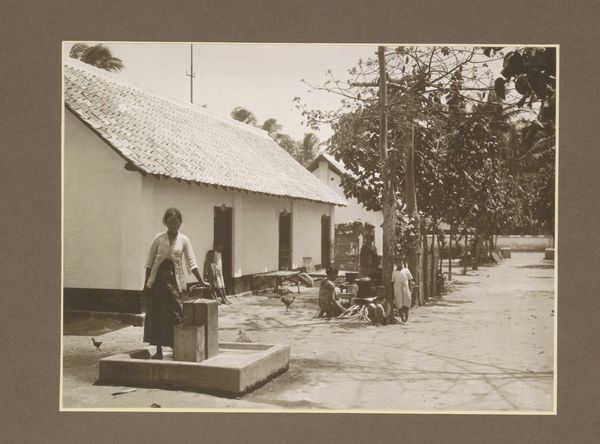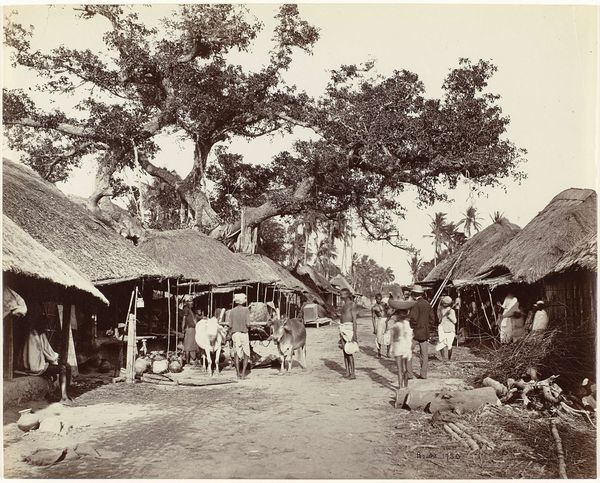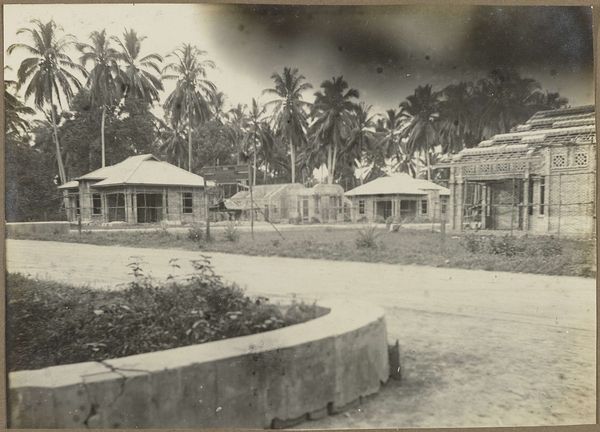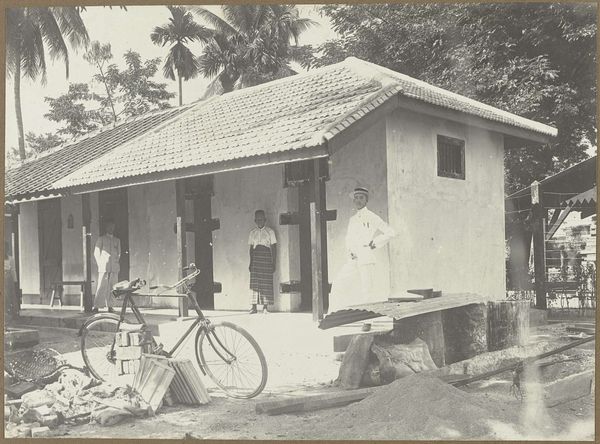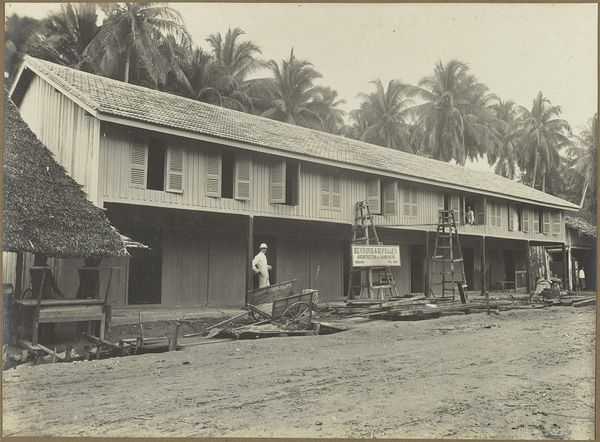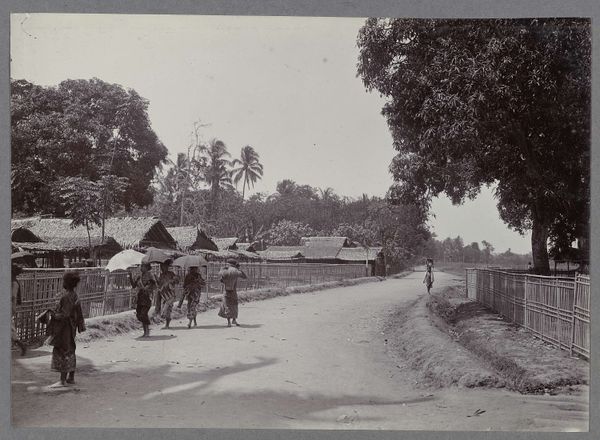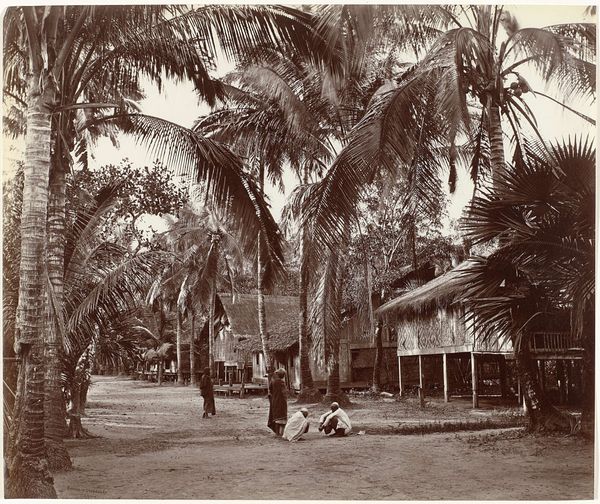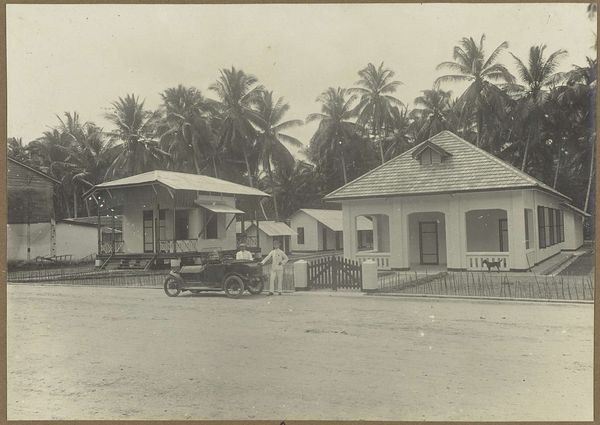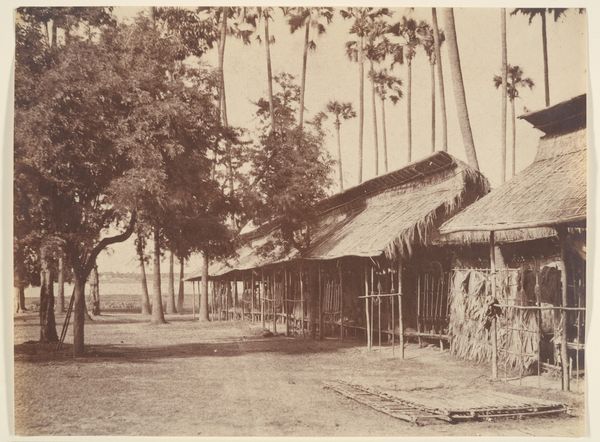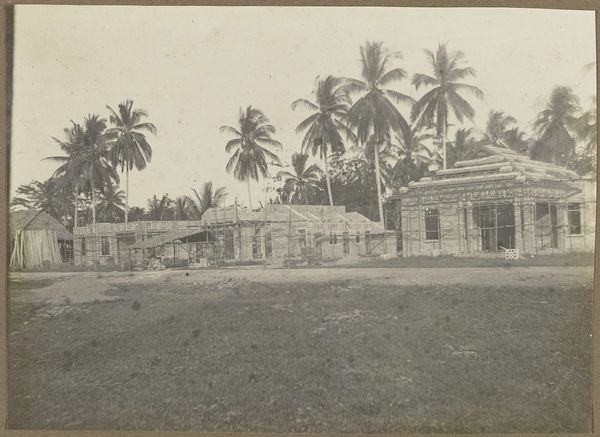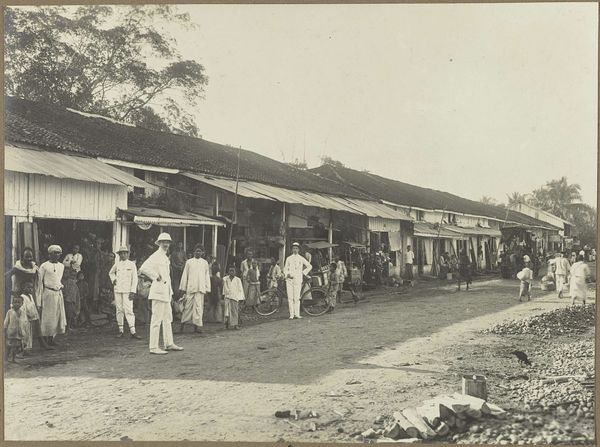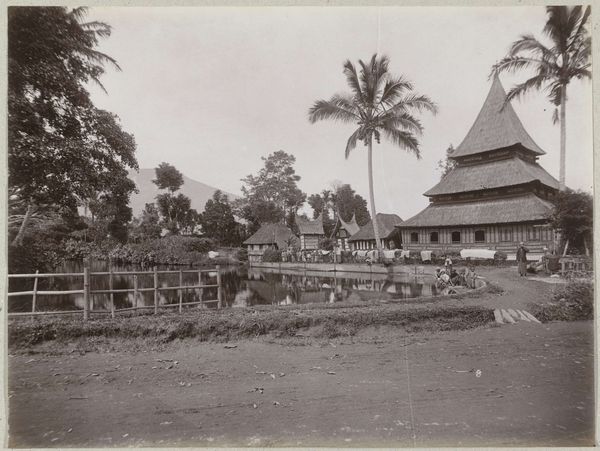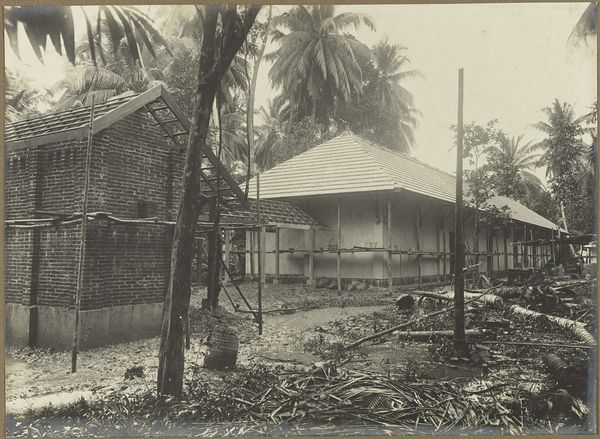
photography, gelatin-silver-print
#
portrait
#
print photography
#
dutch-golden-age
#
landscape
#
photography
#
historical photography
#
orientalism
#
gelatin-silver-print
Dimensions: height 297 mm, width 450 mm
Copyright: Rijks Museum: Open Domain
Curator: Isken's gelatin silver print, likely taken between 1925 and 1930, offers a glimpse into the "Bewoners van de kampong bij suikerfabriek Boedoeran te Sidoarjo op Java"—that's "Inhabitants of the village near the Boedoeran sugar factory in Sidoarjo, Java." Editor: My first impression is one of deliberate composition. The sign, placed centrally, almost cleaves the image into distinct planes—the architectural space to the left and the assembled villagers to the right, all under the soft light. Curator: That central division you note is interesting. The formal structure, with its sharp lines and ordered geometry, visually embodies colonial power. Consider how this contrasts with the seemingly informal arrangement of the figures, embodying perhaps the lives circumscribed by this very power. The subjects stand rigidly; this performative element raises critical questions about representation. Editor: Absolutely. The perspective emphasizes depth. I'm particularly drawn to the gradation of light and shadow across the facade of the building. The repeating architectural elements create a visual rhythm—those dark openings punctuating the bright white surface—while the dark signage provides a very defined foreground, further playing with light as a compositional element. Curator: Think about what this sugar factory represents: colonial extraction, forced labor, the disruption of indigenous economies. Isken’s choice of composition implicates both the subjects and the structures. The image doesn’t merely depict; it argues—or perhaps mourns—for the dispossession of a people. The carefully placed individuals appear more as elements of a constructed reality. Editor: The tonal range contributes significantly, too. Silver gelatin prints have a particular luminescence, allowing for such a nuanced play of light that we see here. The sharp detail resolves various shapes and textures that adds dimensionality, lending a sense of authenticity. However, that sense may very well be a part of its persuasive force. Curator: Exactly, the “authenticity” of the photograph itself needs interrogation. We can see beyond the seeming objectivity to confront questions of how these images furthered colonial narratives and power structures, reducing individuals to elements in someone else’s story. Editor: I concede; focusing on the structural qualities of light and composition gives only a partial understanding. Analyzing the subject of the print expands our perspective. Curator: Ultimately, this photograph forces us to see the individuals not just as subjects in a photograph but as individuals caught in a system. Understanding this informs a deeper interpretation of both its aesthetic choices and its legacy.
Comments
No comments
Be the first to comment and join the conversation on the ultimate creative platform.
